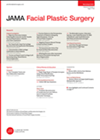Eduardo Morera Serna currently works in Otorhinolaryngology / Facial Plastic Surgery, Hospital Universitario Son Espases, Palma de Mallorca, Spain.
Eduardo studied medicine at the Facultad de Medicina Universidad Autónoma de Madrid, Spain 1989-1995. This was then followed by an ENT residence at the Servicio de Otorrinolaringología y Patología Cervicofacial, Hospital Universitario La Paz, Madrid, Spain from 1997 to 2001, and fellowships in Oral and Maxillofacial Surgery and Facial Plastic Surgery in Bogotá, Colombia.
He is a Vocal of the Facial Plastic Surgery section of the Sociedad Española de Otorrinolaringología since 2004, a member of the European Academy of Facial Plastic Surgery, the Sir Charles Bell Society, the European Board of Otolaryngology (2011) and a Board-Certified Facial Plastic Surgeon (IFFPSS) since 2012.
He is also Director of six international courses on Facial Plastic Surgery, faculty in more than 30 national and international course, author of 18 book chapters and 20 articles and author of the 2012 book Cirugía Plástica Facial published by the Spanish Society of Otolaryngology.
His fields of expertise include facial plastic surgery: rhinoplasty, reconstruction, facial palsy, cosmetic surgery.
JOURNAL REVIEWED: Plastic and Reconstructive Surgery and JAMA Facial Plastic Surgery – Oct 2013 (ongoing)
Latest Contribution
A retrospective comparison between standard septoplasty and extracorporeal septoplasty
This paper shows the results of a retrospective study made on 169 patients with nasal obstruction due to a deviated nasal septum who were operated using a standard septoplasty technique or performing an extracorporeal septoplasty. Postoperative nasal patency, aesthetic outcome,...
Labbé in children
This is the first report in the literature of orthodromic temporalis tendon transfer or the Labbé technique performed on children. The authors used a modification of the transoral approach to the temporalis tendon, originally described by Byrne and Boahene, which...
Non invasive simple reshaping of pinnae
The authors of this paper show the results of a prospective controlled in vivo animal model study where the pinnae of 18 New Zealand white rabbits were subjected to electromechanical reshaping (EMR) and three months postoperative splinting. Six voltage and...




